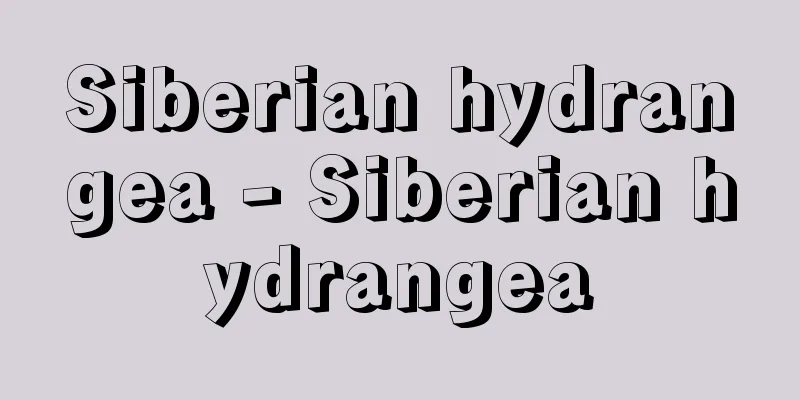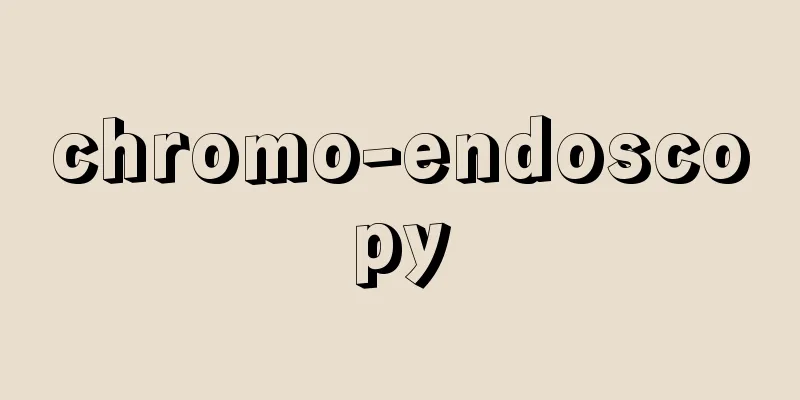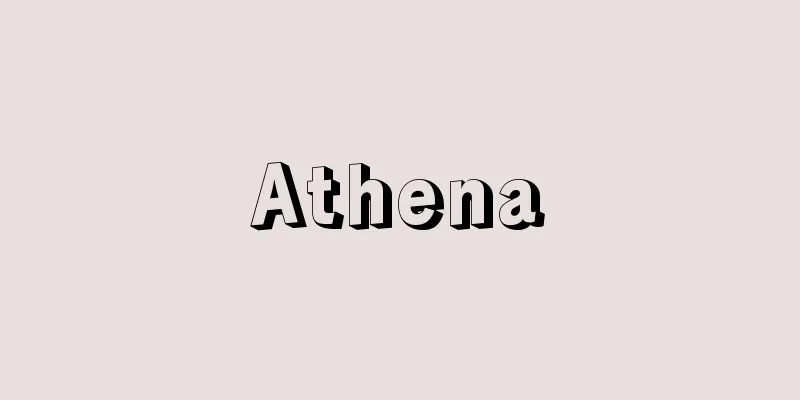Dried foods - Dried fruits

|
It is a general term for relatively preserved foods such as fish, meat, seaweed, and vegetables that have been dried in the sun or hot air to reduce the moisture content. It can also refer only to dried plant foods. In this case, fish is called dried fish or dried fish, and meat is called dried meat. When the moisture content of a food falls below 40%, the growth of microorganisms and the activity of enzymes in the food slow down somewhat, and when the moisture content falls below 15%, these activities come to a halt. Furthermore, when the moisture content falls below 10%, most changes caused by microorganisms and enzymes stop, and the food can be stored for a fairly long time. [Tomomi Kono and Midori Otaki] historyIt seems likely that the effectiveness of drying for preserving fresh foods was already known in primitive times. In particular, preserving foods as dried goods was the only method available until other suitable preservation methods were discovered. Even in ancient Japan, dried seafood such as dried squid, kelp, and dried abalone were widely used, and in Europe, dried fruits and meats such as dried figs, dried apricots, and dried meat were also widely used. Currently, various new drying methods have been invented, and it is possible to produce a variety of dried foods in better condition. [Tomomi Kono and Midori Otaki] Type and methodThere are two drying methods: sun drying and artificial drying. Sun drying is done by drying in the sun or air, while artificial drying includes hot air drying and smoking. In addition, various drying methods are applied depending on the type of fish, meat, fruit, vegetables, seaweed, etc., and the finished products differ. For fish and shellfish, there are methods such as plain drying, salt drying, boiled and dried sardines, seasoned and dried fish, grilled and dried fish, and dried fish in pieces. Plain drying and salt drying are used for small fish such as horse mackerel, sardines, and squid, boiled and dried sardines are small sardines boiled and dried, seasoned and dried fish is mirin-boshi (sweet sake dried fish), horse mackerel, and pacific saury, grilled and dried fish is flying fish and pufferfish, and smoked and dried fish is used for herring. Dried fish are made by boiling the fish and then smoking it, molding it, and drying it in the sun in combination, and examples include dried bonito, dried round herring, and dried mackerel. Vegetables and fruits that are dried raw include shiitake mushrooms, dried gourd, dried hiba leaves, daikon radishes, figs, and apricots, while boiled and dried products include sweet potatoes. Other products that are frozen, then thawed and dried include frozen tofu, frozen konnyaku, frozen mochi, and agar. Most seaweed is dried without any preservatives. Meat includes smoked meat and air-dried meat. [Tomomi Kono and Midori Otaki] nutritionDried foods lose a lot of vitamins, but there is little change in protein and minerals. Fats are fine when they are dried, but because they contain little moisture they are susceptible to the action of oxygen in the air and are prone to oxidation. Fish that contain a lot of polyunsaturated fatty acids are particularly prone to oxidation, and as the fat oxidizes they react with amino acids and other substances, and if the browning phenomenon known as oil burn occurs, it can easily cause poisoning. Methods that can be used to prevent the oxidation of fats include using antioxidants, filling airtight containers with nitrogen gas, or sealing in oxygen absorbers. [Tomomi Kono and Midori Otaki] Source: Shogakukan Encyclopedia Nipponica About Encyclopedia Nipponica Information | Legend |
|
魚、肉、海藻、野菜などを日光や熱風などで乾かし、水分を少なくした比較的保存性のある食品の総称である。また植物性の食品の乾燥物のみをさすことがある。この場合、魚は干し魚または干物、肉は干し肉といった呼び方で区別する。食品類は水分が40%以下になると、微生物の繁殖や食品中の酵素の働きはやや緩やかとなり、水分15%以下になると、ほぼこれらの活動は休止に近い状態となる。さらに水分が10%以下になると、ほとんど微生物や酵素による変化は停止し、かなり長期の保存に耐えるようになる。 [河野友美・大滝 緑] 歴史なまのものを保存するのに乾燥させるのがよいことは、原始時代すでに知られていたものと思われる。とくにほかの適当な保存方法が発見されるまでの間、乾物として保存することは唯一の手段であった。日本の古い時代をみても、するめ、昆布、干しあわびといった海産物の乾物が多く用いられているし、ヨーロッパでも干しいちじく、干しあんず、干し肉といった果物や肉の乾燥物も多く使われている。現在は各種の新しい乾燥法が発明されており、状態のよりよい各種の乾物がつくられるようになっている。 [河野友美・大滝 緑] 種類・方法乾燥法としては天日乾燥と人工乾燥がある。天日乾燥は日光あるいは風乾によるが、人工乾燥は熱風乾燥、薫乾などがある。また、魚、肉、果物、野菜、海藻など種類により各種の乾燥法が適用され、できあがった品物にも差異がある。魚貝類では素干し、塩干し、煮干し、調味干し、焼き干し、薫乾、節(ふし)類などがある。素干し、塩干しはアジ、イワシ、イカなど小形の魚に用いられ、煮干しは小イワシをゆでて干したもの、調味干しはイワシ、アジ、サンマなどのみりん干し、焼き干しはトビウオ、フグなど、薫乾はニシンなどに用いられる。節類は魚をゆでて、いぶし乾燥、かび付け、日光乾燥などの併用でつくられ、カツオ節、ウルメイワシ節、サバ節などがある。野菜、果物では、なまのまま干したものはシイタケ、かんぴょう、干葉(ひば)、ダイコン、イチジク、アンズなど、ゆで干しではサツマイモなどがある。このほか、いったん凍結したのち解凍し乾燥する凍り豆腐、凍りこんにゃく、凍り餅(もち)、寒天などがある。海藻類はほとんどが素干しである。肉ではいぶし肉、風乾肉がある。 [河野友美・大滝 緑] 栄養乾物はビタミン類の消失がかなり大きい。しかし、タンパク質や無機質の変化は少ない。脂肪は乾物にした当座はよいが、水分が少ないため空気中の酸素の作用を受けやすく、酸化がおこりやすい。とくに多価不飽和脂肪酸を多く含む魚類は酸化しやすく、脂肪の酸化とともにアミノ酸などと反応をおこし、油焼けといわれる褐変(かっぺん)現象をおこしたものは中毒をおこしやすい。脂肪類の酸化防止には、酸化防止剤の使用や、密封容器の中に窒素ガスを充填(じゅうてん)したり、脱酸素剤を封入するなどの方法もとられる。 [河野友美・大滝 緑] 出典 小学館 日本大百科全書(ニッポニカ)日本大百科全書(ニッポニカ)について 情報 | 凡例 |
>>: Kampuchea United Front - Kampuchea United Front
Recommend
Akitsuso
…The city was also a key transportation point whe...
Vibration induced white finger
...In Japan, this symptom gradually appeared afte...
Imiaki
〘noun〙① The end of the mourning period. Imiake. Ki...
Vector space - bekutorukuukan (English spelling) vector space
It is also called a linear space. It is a space w...
Actor Review - Yakushahyobanki
Kabuki drama book. From the early Edo period to t...
Kleptomania - Touheki
〘 noun 〙 The habit of impulsively stealing other p...
Northern screamer
...It is distributed from Venezuela to southern B...
Ako [city] - Ako
The city is located in the southwestern corner of ...
Maebaru [city] - Maebaru
An old city in the west of Fukuoka Prefecture. It ...
Guilmin, R.
…(1)CRF is an abbreviation for corticotropin rele...
Inflammation of a hernia
… [Seiji Takita]. … *Some of the terminology that...
Menfuryu
A folk art form. A type of Furyuu dance found in t...
Abyssinian colobus
...Head and body length is about 70 cm, tail leng...
Salary - Cumulative salary
〘 noun 〙① Academic fees paid to students (students...
Suva - Suba (English spelling) Suva
The capital of Fiji in the southwest Pacific. It ...









